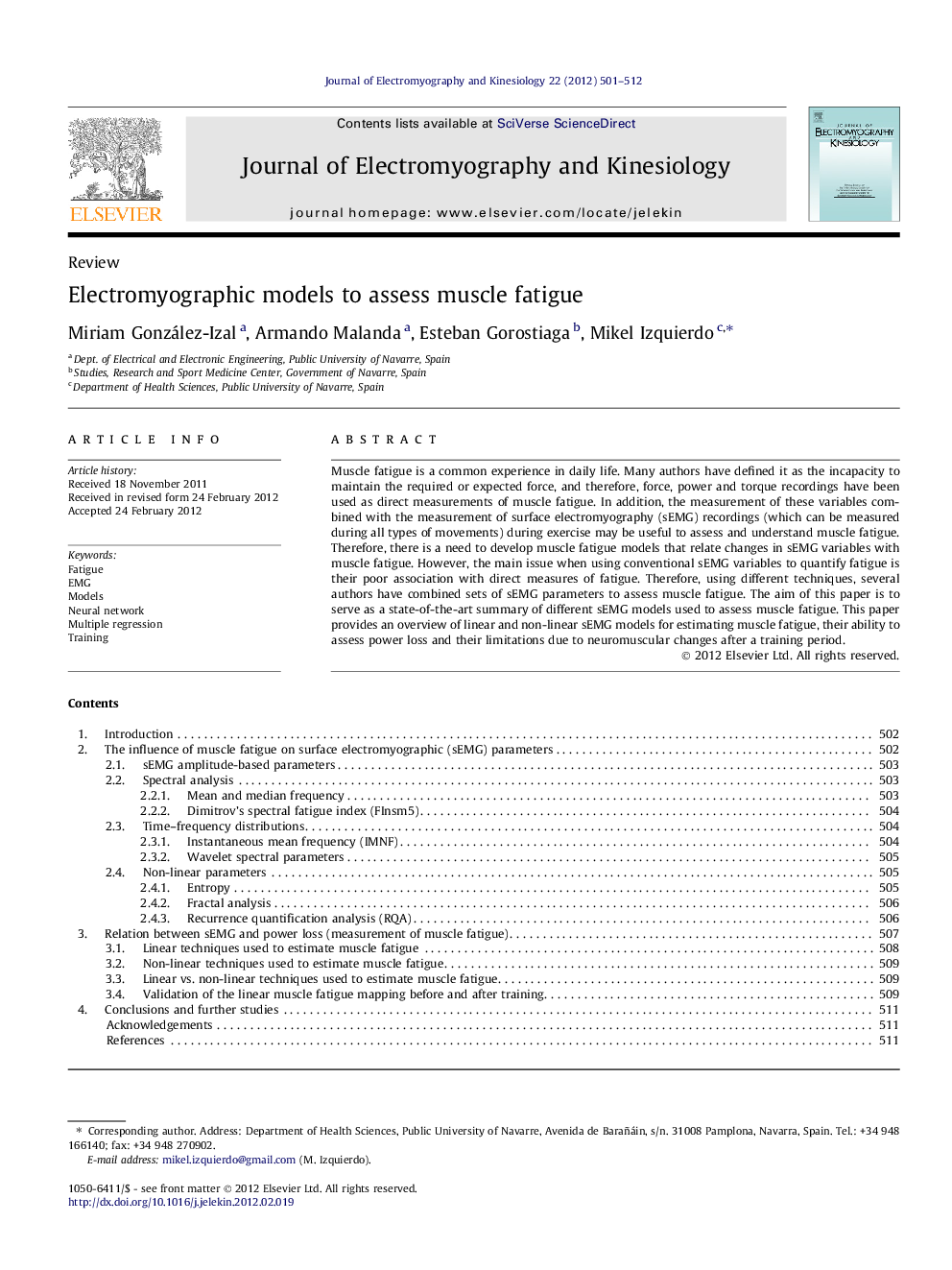| Article ID | Journal | Published Year | Pages | File Type |
|---|---|---|---|---|
| 4064894 | Journal of Electromyography and Kinesiology | 2012 | 12 Pages |
Muscle fatigue is a common experience in daily life. Many authors have defined it as the incapacity to maintain the required or expected force, and therefore, force, power and torque recordings have been used as direct measurements of muscle fatigue. In addition, the measurement of these variables combined with the measurement of surface electromyography (sEMG) recordings (which can be measured during all types of movements) during exercise may be useful to assess and understand muscle fatigue. Therefore, there is a need to develop muscle fatigue models that relate changes in sEMG variables with muscle fatigue. However, the main issue when using conventional sEMG variables to quantify fatigue is their poor association with direct measures of fatigue. Therefore, using different techniques, several authors have combined sets of sEMG parameters to assess muscle fatigue. The aim of this paper is to serve as a state-of-the-art summary of different sEMG models used to assess muscle fatigue. This paper provides an overview of linear and non-linear sEMG models for estimating muscle fatigue, their ability to assess power loss and their limitations due to neuromuscular changes after a training period.
